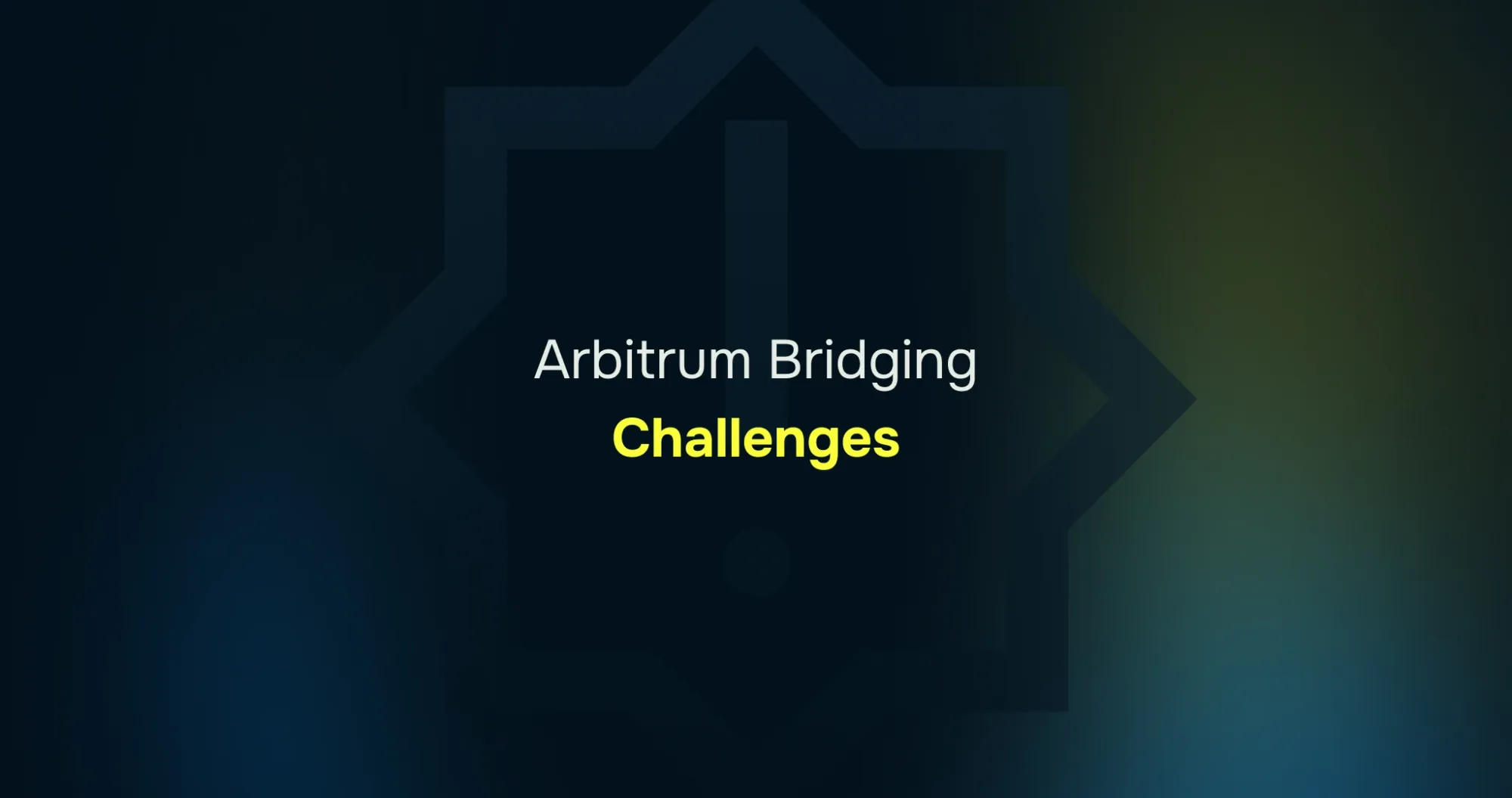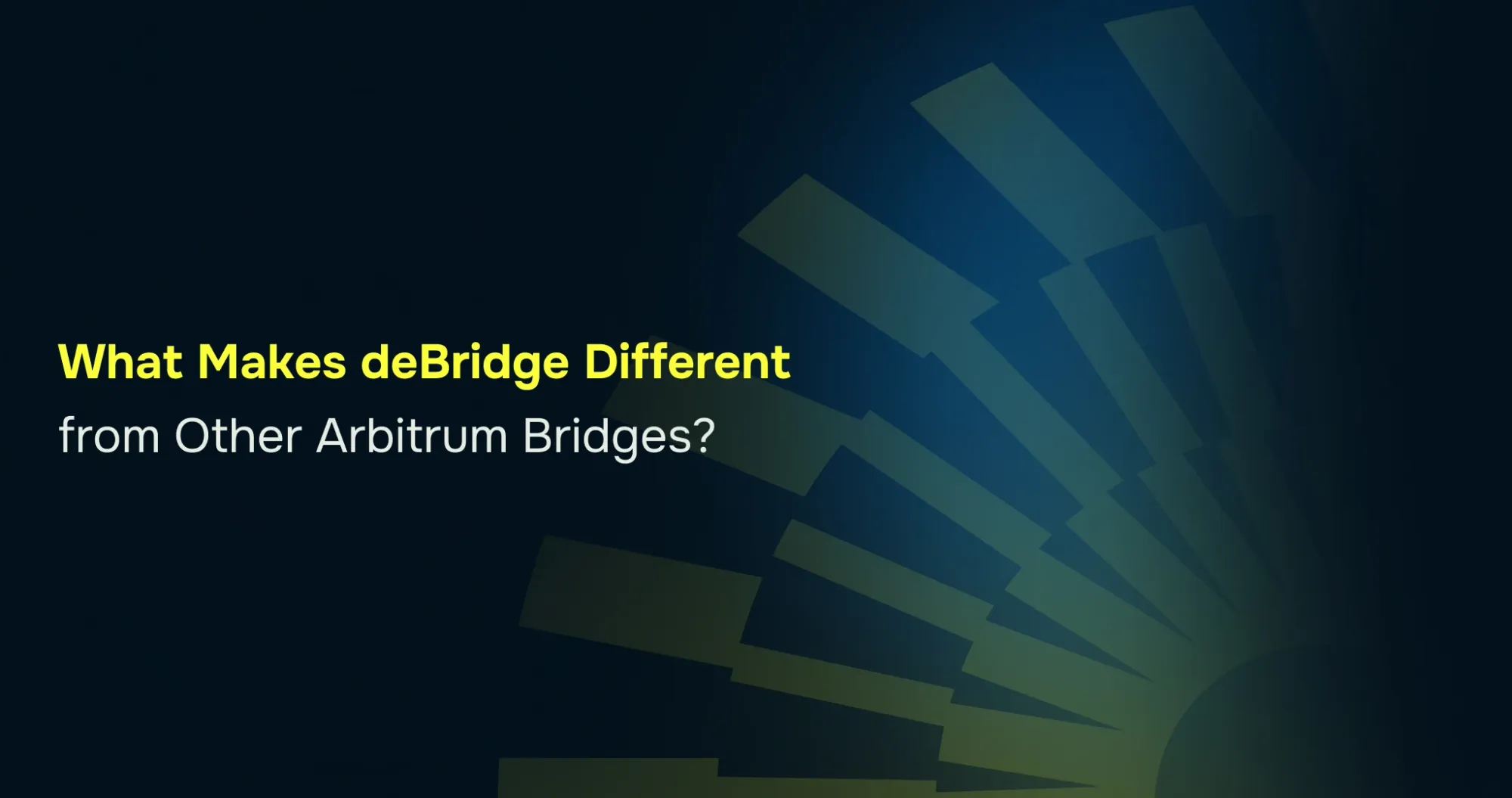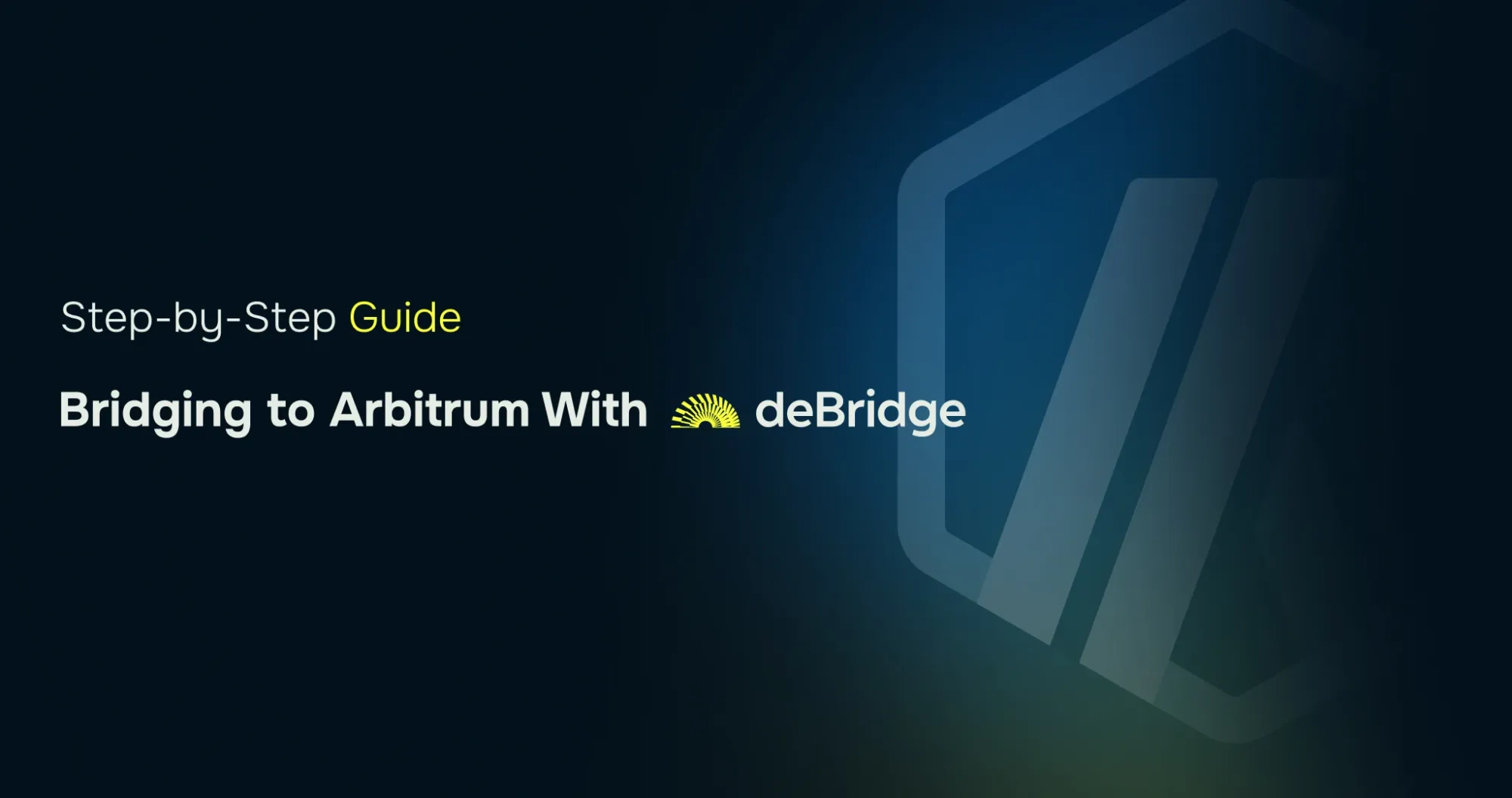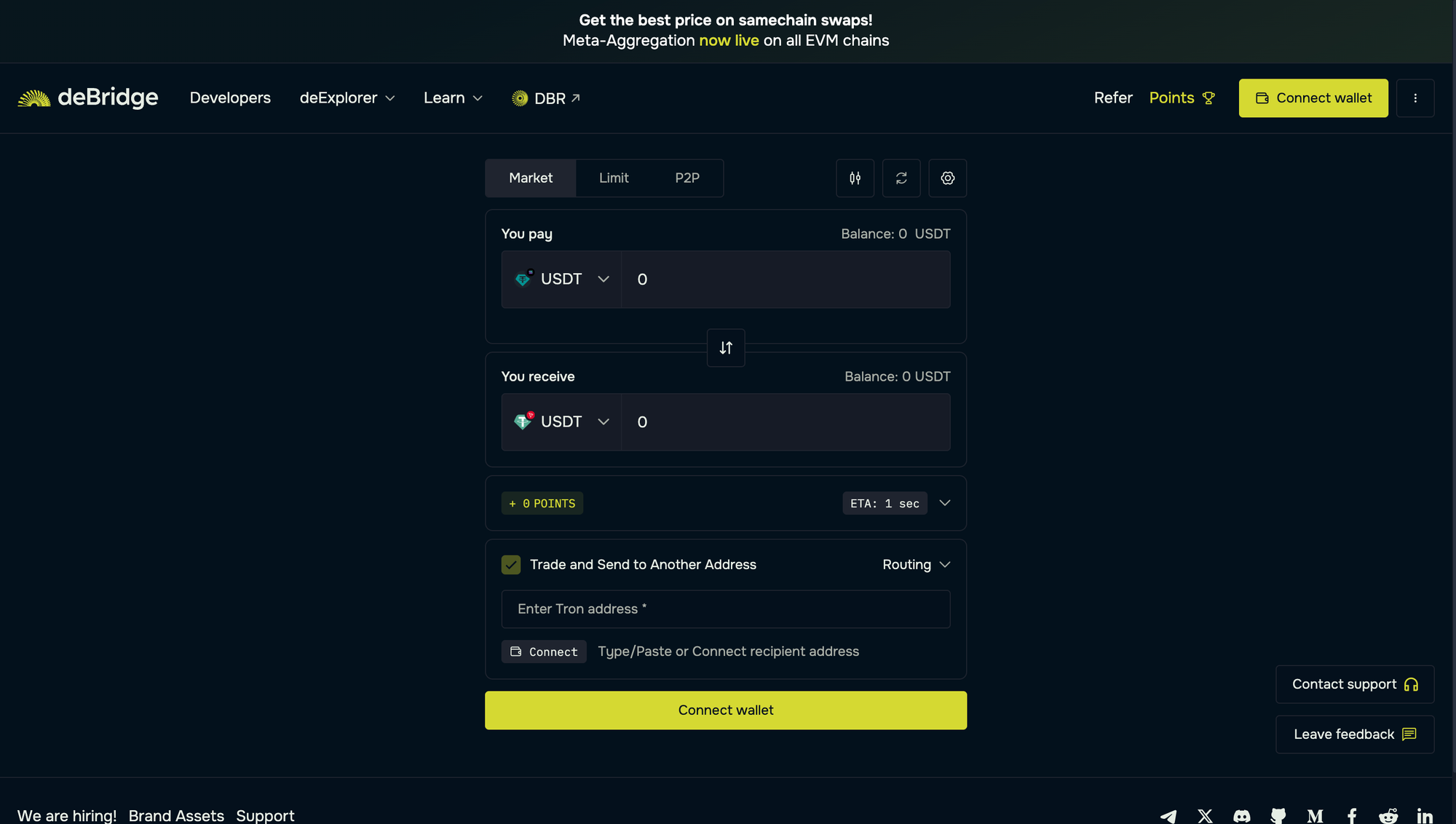A Guide On How To Bridge To Arbitrum Quickly And Securely

Table of Contents
- Key Takeaways
- Why Users Bridge to Arbitrum
- Arbitrum Bridging Challenges
- What Makes deBridge Different from Other Arbitrum Bridges?
- What You Need Before Bridging to Arbitrum
- Step-by-Step Guide: Bridging to Arbitrum With deBridge
- Security and Reliability: Why deBridge is the Safest Option
- Conclusion
- Frequently Asked Questions (FAQs)
- Related Resources
Ethereum remains the foundation of decentralized finance (DeFi), but its high fees and network congestion can be frustrating for active users. That’s where Arbitrum comes in. Arbitrum is one of Ethereum’s most trusted Layer 2 (L2) scaling solutions, also home to Hyperliquid perps exchange.
Arbitrum brings Ethereum’s security and reliability to the entire ecosystem. It has become a hub for DeFi traders, yield farmers, power users, and developers. But before you can experience the dApps built on Arbitrum, it is important to bridge your assets from Ethereum, Solana, or another blockchain.
In this guide, we’ll explore what makes Arbitrum a leading destination for DeFi, common challenges with traditional bridges, and how deBridge allows you to move your assets to Arbitrum quickly and securely.
Key Takeaways
- Arbitrum is an Ethereum Layer 2 designed to solve scalability and transaction fee challenges.
- Users bridge to Arbitrum to access faster execution, lower gas costs, and top DeFi protocols.
- An Arbitrum bridge connects Ethereum and other chains to the Arbitrum network.
- Bridges differ in speed, security, and supported tokens.
- deBridge provides real-time bridging to Arbitrum with no wrapped assets and zero pooled liquidity.
Why Users Bridge to Arbitrum
Arbitrum holds a strong position in the list of Ethereum scaling solutions for users who prioritize security while enjoying faster and cheaper transactions. Built by Offchain Labs, Arbitrum leverages Optimistic Rollup technology to reduce wait times and transaction costs on the blockchain.
Let’s take a look at some of the advantages of bridging to Arbitrum:
- Low Gas Fees: Transaction costs on Arbitrum are 90–95% lower than on Ethereum. It is ideal for retail and institutional users executing high-frequency transactions.
- Fast Execution: Arbitrum transactions confirm in seconds, ensuring a smooth trading experience for power users on perps, DEXs, and dApps.
- Ethereum Security: Arbitrum inherits the full security of Ethereum, allowing users to transact with confidence.
- Broad Ecosystem: Arbitrum is home to leading DeFi protocols like Hyperliquid, GMX, Camelot, Uniswap, Silo, and Aave.
Common Use Cases
- Perpetuals trading on Hyperliquid
- Trading on Arbitrum-native DEXs such as GMX, Camelot, and Uniswap
- Yield farming or staking with lower transaction costs
- Moving stablecoins (USDT, USDC, DAI) for cheap, fast settlements
- Deploying dApps or contracts using Arbitrum’s EVM-compatible environment
- Airdrop opportunities or new token launches
Arbitrum Bridging Challenges

Traditional bridges have always made people scared about the idea of bridging. They cause more problems than they solve, such as asset delays, wrap risks, wallet limitations, and many other issues.
Official Arbitrum Bridge
The official Arbitrum bridge enables the transfer of assets between Ethereum and Arbitrum. It's a simple bridge, but many users don't choose it as their first option. Why? Let’s find out:
- Slow withdrawal times: Withdrawals from Arbitrum to Ethereum can take up to 7 days due to the Optimistic Rollup challenge period.
- Limited chain support: The official bridge supports a limited number of chains, excluding Solana, BNB Chain, Tron, and many others.
- Limited token support: The bridge only supports ETH and ARB for transfers between Ethereum and Arbitrum.
- Slow UX: The user experience feels somewhat outdated for this generation of applications.
These restrictions have prompted users to try third-party bridges, which attempt to fix speed and token support problems but often introduce new risks.
Common Problems with Third-Party Arbitrum Bridges
- Pooled Liquidity Risk: Many bridges rely on pooled liquidity models, where user funds are temporarily stored in smart contracts. This creates large honeypots vulnerable to hacks or exploits.
- Wrapped Token Risk: Some bridges issue wrapped versions of tokens instead of delivering native assets. Wrapped assets can lose their peg or become worthless if the bridge provider fails.
- Slippage and Delays: Decentralized bridges using liquidity pools can experience price slippage and delayed settlements during high network activity.
- Limited Asset Support: Many bridges only support a handful of tokens, forcing users to swap before bridging.
What Makes deBridge Different from Other Arbitrum Bridges?

deBridge stands out by focusing on three key principles: native asset transfers, instant finality, and security-first architecture. While most bridges use wrapped assets or rely on liquidity pools, deBridge uses a 0-TVL (Total Value Locked) architecture to mitigate the risk of vulnerabilities.
How deBridge Solves Them
deBridge removes the bottlenecks and risks of liquidity pools by enabling value and information to flow instantly across the DeFiverse with deep liquidity and guaranteed rates.
- Native asset transfers: Skip the concept of wrapping and bridge native assets.
- 0-TVL architecture: There are no liquidity pools, which means there’s no smart-contract honeypot risk. User funds are never exposed to contract risk.
- Real-time bridging: Asset is received before transaction finality.
- Wide chain support: Supports all major assets (ETH, USDC, SOL, USDT, WBTC, and more) across 24+ chains, including Ethereum, Solana, BNB Chain, and Arbitrum.
- Universal wallet support: Works with MetaMask, Phantom, WalletConnect, Coinbase Wallet, and many more.
deBridge vs Stargate vs Across vs Arbitrum Bridge
What You Need Before Bridging to Arbitrum
Before connecting to Arbitrum, you must set up your wallet client using the Arbitrum Mainnet RPC information. To do this, visit Chainlist, connect your wallet, and allow it to add Arbitrum RPC details into your client.
Ensure you have enough gas tokens on your source chain (e.g., ETH, BNB, or SOL, depending on the origin chain) to cover bridging transaction fees. It’s also recommended to hold a small amount of Ethereum tokens ($ETH) in your wallet to cover the gas fees.
Please note that Arbitrum uses $ETH as the gas currency on its blockchain.
Having everything set up, you’re now ready to bridge assets to Arbitrum and start exploring its fast, cheap, and robust onchain environment.
Step-by-Step Guide: Bridging to Arbitrum With deBridge

deBridge offers a quick bridging solution to transfer assets between Arbitrum and any asset on Sonic, or vice versa. Here are the simple steps to bridge your crypto assets efficiently:

- Select the source chain and asset you’d like to bridge. Here, we will select Solana as the source chain and USDC as the asset.

- Next, select the destination chain and asset you’d like to receive. Here, we will choose Arbitrum and USDC as the asset on the target chain.

- Connect your Solana wallet as the source and EVM wallet as the destination.
- Enter the USDC quantity and review the transaction details.

- Confirm trade and sign the ensuing transactions to receive native USDC in your Arbitrum account.
Pro Tips
- Make sure you have sufficient $ETH in your destination chain (Arbitrum) for future transactions.
The "Order Fulfilled" pop-up will appear on your bridging screen in 1-2 seconds, indicating that the process is complete and bridged assets (ETH) have been received in your Arbitrum wallet. Technical users can also inspect the transaction(s) on the Arbitrum mainnet explorer.
Security and Reliability: Why deBridge is the Safest Option
Security is the #1 priority for deBridge.
That said, deBridge uses a 0-TVL architecture offering real-time liquidity for everyone. Unlike traditional crypto bridges that pool user funds into smart contracts and are prone to exploits, deBridge minimizes the attack surface area by removing the liquidity pools from the equation.
By mid-2025, deBridge had already completed 30+ audits by top firms, including Zokyo, Halborn, and Ackee. It also features a generous $200K bug bounty that has still not been claimed since its launch.
To help keep your transactions safe, it ensures that funds arrive in the destination wallet before the transaction is finalized, maintaining user trust, along with zero downtime and no security risks since its inception.
Why Users Trust deBridge?
deBridge has earned the trust of users across all generations for seamless bridging to any part of DeFi. It also offers a variety of features, including:
- 0-TVL = no pooled liquidity risk
- Audited 30+ times, zero security incidents
- Funds delivered to the wallet before transaction finalization
- Trusted by Phantom, Trust Wallet, Jupiter, OKX, and Solflare
Conclusion
Bridging to Arbitrum opens the door to one of the fastest-growing blockchains, with a market share of over 36% among Ethereum Layer 2s. With its EVM compatibility, high speed, and low-cost environment, Arbitrum becomes the top choice for power users.
Using deBridge ensures that your move to Arbitrum is not only instant but also completely secure. Paired with 0-TVL architecture, real-time execution, and a no-wrapped-token design, eliminates traditional bridge risks such as slippage and liquidity fragmentation.
Instantly move to Arbitrum with deBridge.
